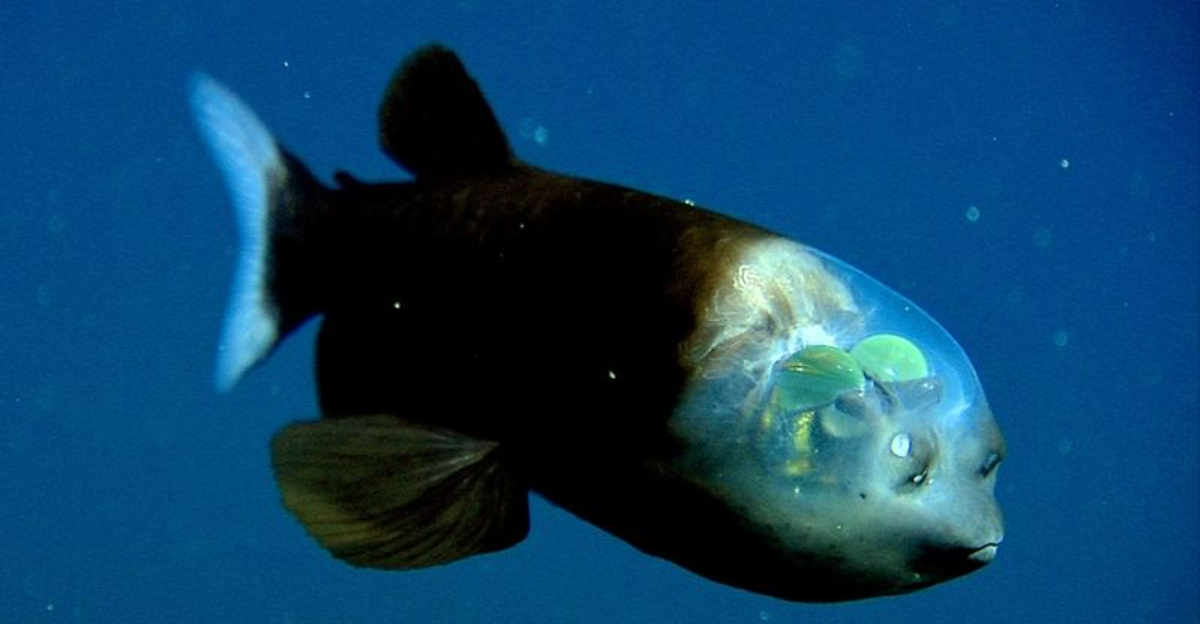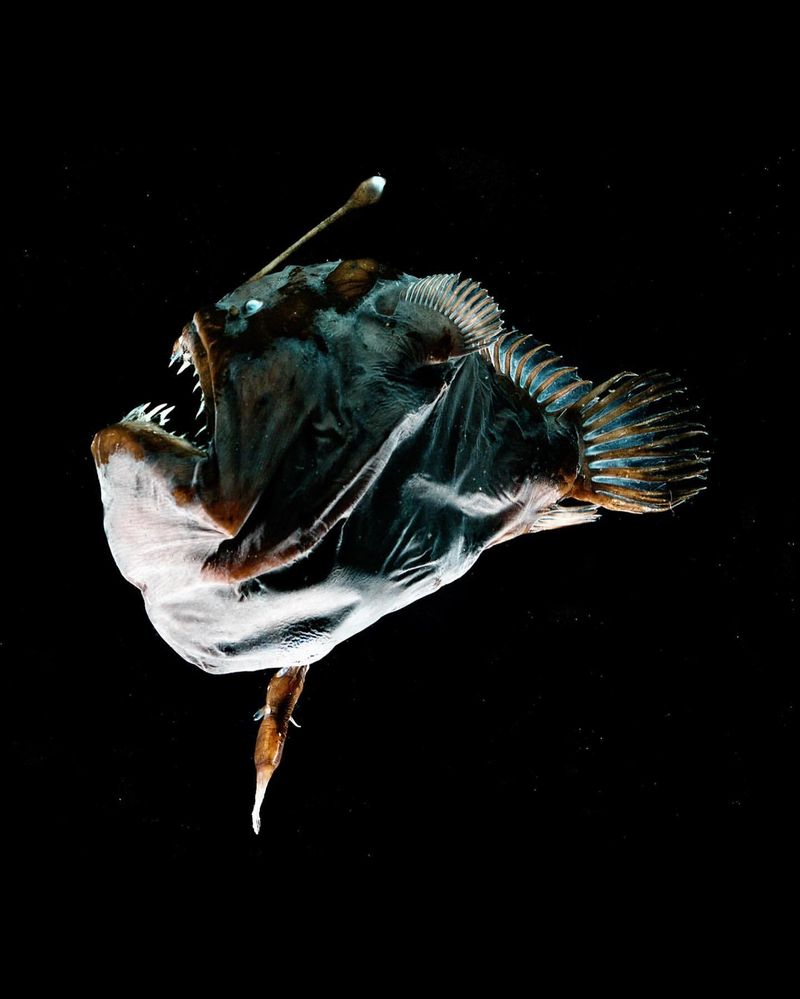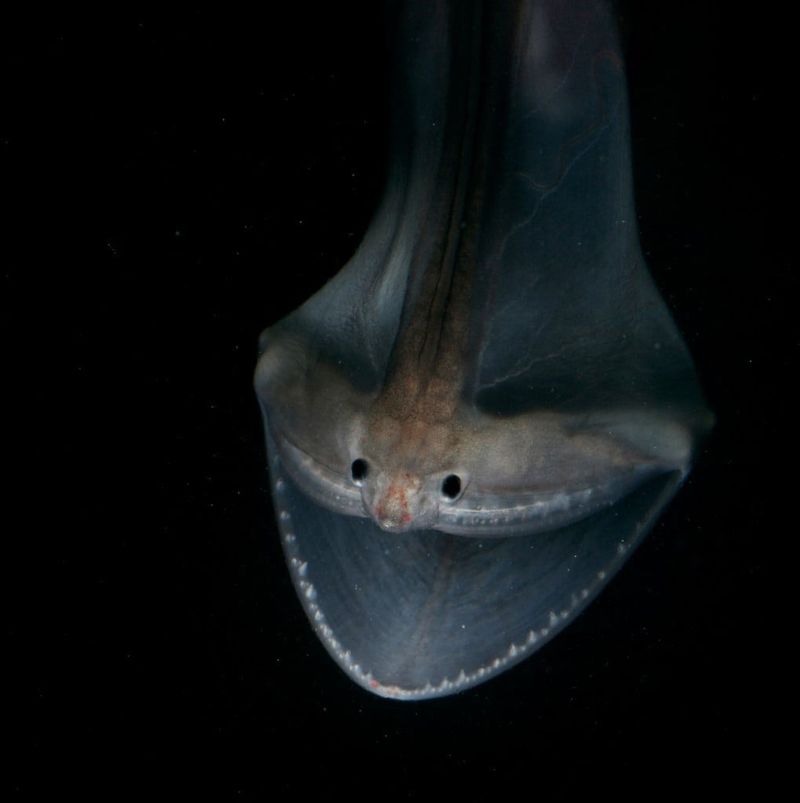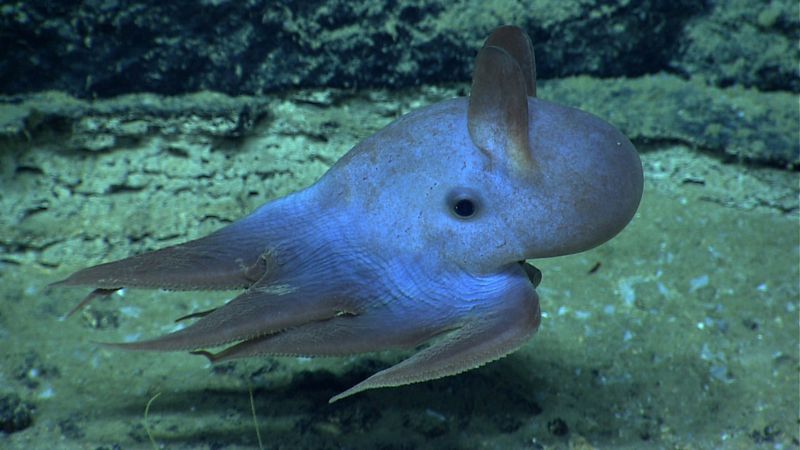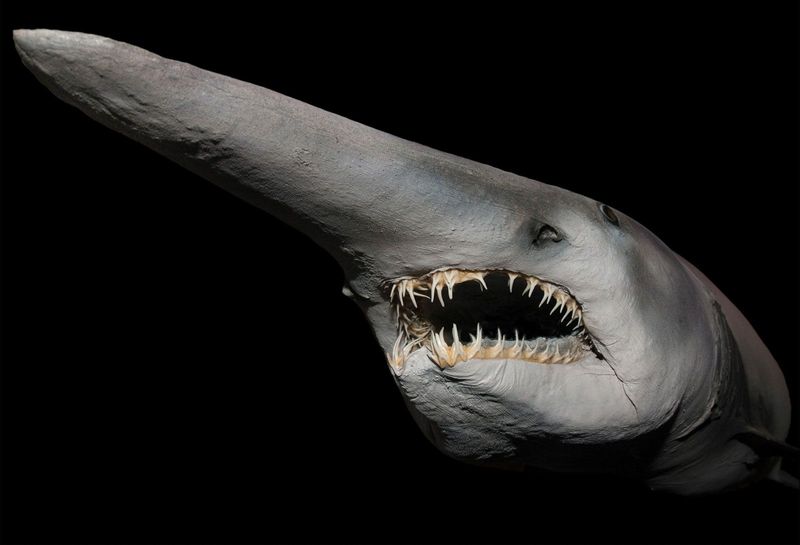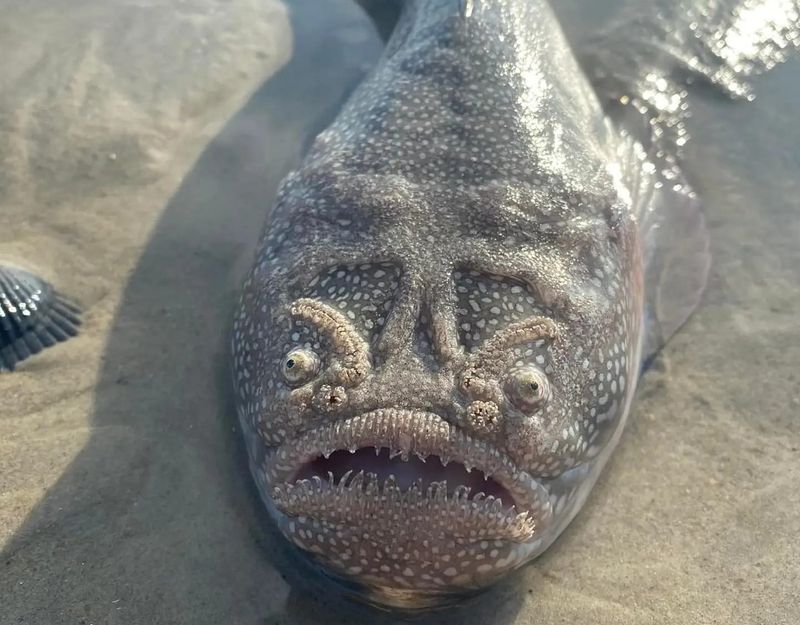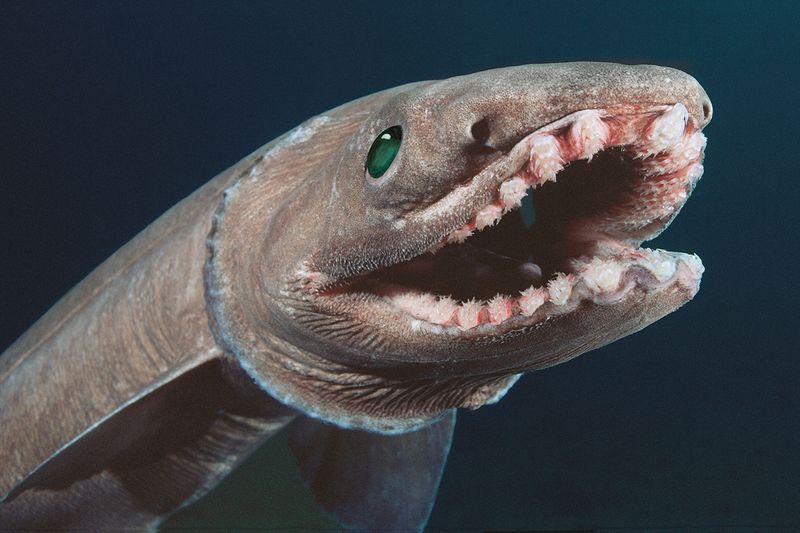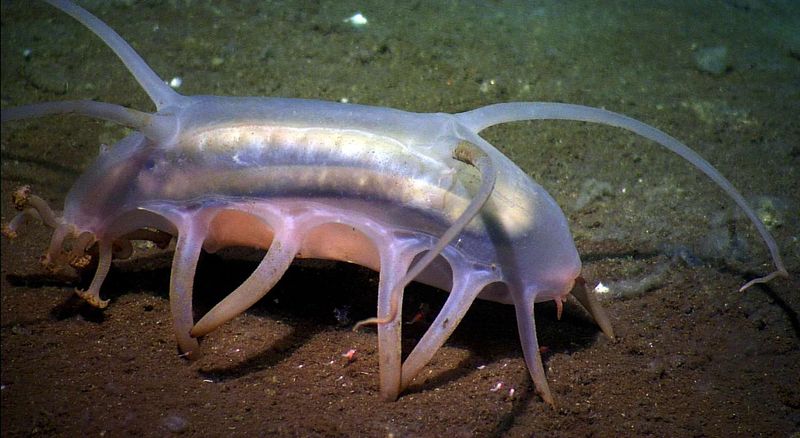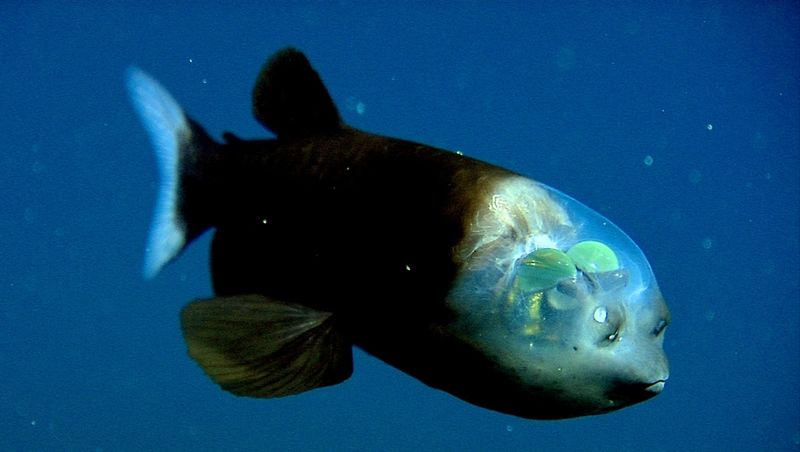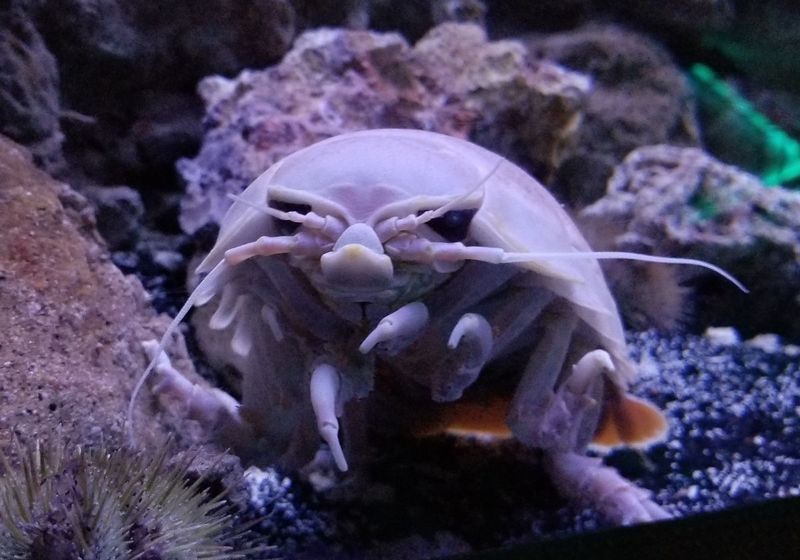📖 Table of Content:
The deep sea harbors some of the most bizarre and fascinating creatures found on Earth. In this hidden, lightless world, evolution has crafted animals with strikingly alien features. These strange beings not only capture our curiosity but also reveal the diversity and adaptability of marine life.
From bioluminescent predators to gelatinous drifters, each species possesses unique traits for survival in extreme conditions. Their adaptations, like glowing lures and transparent bodies, help them navigate the dark depths. These creatures push the boundaries of what we consider normal in the animal kingdom.
Exploring these 10 deep-sea wonders offers a glimpse into an environment rarely seen by human eyes. As we uncover their secrets, we deepen our understanding of the ocean’s role in Earth’s ecosystem. The mystery of the deep sea continues to inspire awe and drive scientific discovery.
1. Anglerfish
Lurking in the pitch-black depths, the anglerfish reigns as a fearsome ambush predator, wielding its glowing lure to entice unsuspecting prey. Bioluminescence guides the hunt, while the female, far larger and more menacing than the male, flashes sharp teeth and an eerie presence in the darkness.
Living thousands of meters below the surface, these fish have adapted to survive in extreme conditions. Their ability to withstand immense pressure and frigid temperatures is remarkable.
Anglerfish have fascinated scientists for years, leading to studies on their unique reproduction, where the male fuses to the female after mating.
2. Gulper Eel
The gulper eel is a bizarre creature with an oversized mouth capable of swallowing prey larger than itself. This deep-sea dweller possesses a long, whip-like tail, which contributes to its otherworldly appearance.
Unlike most eels, the gulper eel’s jaw is loosely hinged, allowing its mouth to balloon outwards. This adaptation helps it capture elusive prey.
Found in the abyssal depths, gulper eels are seldom seen by humans. Their luminescent tail tip is thought to act as a lure, attracting prey in the near-total darkness of their habitat.
3. Dumbo Octopus
Named for its resemblance to Disney’s flying elephant, the dumbo octopus is a captivating sea creature. This species is unique due to its ear-like fins, which it uses to glide gracefully through the water.
With their soft bodies, these octopuses are adapted to life in the deep sea, often living at depths over 3,000 meters. Their translucent skin and gelatinous form add to their surreal appearance.
Dumbo octopuses are also fascinating for their brooding habits, where the female guards her eggs for months, ensuring the survival of her young.
4. Vampire Squid
Gliding through the oxygen-poor depths, the vampire squid mesmerizes with its webbed arms and glowing red eyes. Neither a true squid nor a vampire, this mysterious creature thrives in the shadows, embodying the strange beauty of the deep sea.
Its skin can turn inside out as a defense mechanism, resembling a cape to confuse predators. The vampire squid’s bioluminescent organs help it navigate the dark ocean environment.
Unique among cephalopods, it feeds on marine snow rather than hunting. This mix of detritus and organic debris sustains it in the nutrient-poor deep sea.
5. Goblin Shark
Lurking in the deep sea, the goblin shark stuns with its otherworldly appearance, earning the title of “living fossil.” Its long, flattened snout and protruding jaws give this elusive predator a prehistoric, almost alien presence in the ocean’s depths.
This rare shark uses specialized organs in its snout to detect electrical fields of prey. Its jaws can extend dramatically to snatch up unsuspecting fish and squid.
Living at depths of over 1,000 meters, the goblin shark’s pinkish-gray skin gives it a ghostly appearance. Its peculiar features have captured the interest of marine biologists worldwide.
6. Stargazer Fish
Stargazer fish are masters of disguise, often burying themselves in the sand with only their eyes and mouth visible. This unique ability allows them to ambush prey with sudden, deadly precision.
Their upward-facing eyes give these fish an unsettling appearance, akin to something from science fiction. Some species even have electric organs to stun prey.
Residing in shallow to deep waters, stargazers are aggressive hunters. Their ability to blend into the ocean floor makes them formidable predators lying in wait.
7. Frilled Shark
Slithering through the deep, the frilled shark carries an ancient, almost mythical presence with its long, eel-like body and distinctive frilled gills. Dating back millions of years, this primitive predator’s rows of needle-like teeth add to its fearsome, prehistoric allure.
Known for its slow, serpentine swimming, the frilled shark thrives in cold, deep waters. Its ability to swallow prey whole stems from its highly flexible jaws.
Rarely encountered, this elusive creature fascinates marine biologists with its prehistoric characteristics, offering a glimpse into the past of shark evolution.
8. Sea Pig
Drifting across the deep ocean floor, sea pigs captivate with their alien-like appearance and soft, translucent bodies. Thriving in cold, dark depths, these peculiar creatures quietly feed on organic particles, playing a vital role in the deep-sea ecosystem.
These sea cucumbers have unique tube-like feet, which they use to scuttle along the ocean bed, often in large groups. Their bizarre appearance and behavior have made them a subject of fascination.
Sea pigs play an essential role in the ecosystem by recycling nutrients and are an important link in the oceanic food chain.
9. Barreleye Fish
Suspended in the ocean’s twilight zone, the barreleye fish mesmerizes with its transparent head and tubular eyes. Encased in a fluid-filled shield, its rotating eyes grant a surreal ability to peer upward through its own skull, embodying the strange wonders of the deep sea.
Living in the mesopelagic zone, this fish’s eyes are adapted to detect silhouettes of prey against faint surface light. Its glowing green lenses filter sunlight.
The barreleye’s bizarre anatomy has intrigued scientists, shedding light on the adaptations needed to survive in the mysterious twilight zone of the ocean.
10. Giant Isopod
Creeping along the ocean floor, giant isopods evoke a prehistoric feel with their armored bodies and multitude of legs. These enormous crustacean relatives of the woodlouse thrive in the deep Atlantic and Pacific, embodying the mysterious and monstrous beauty of the abyss.
These scavengers feed on dead marine organisms, playing a crucial role in the ocean’s ecosystem. They can survive for long periods without food, enduring the extreme conditions of the deep sea.
Giant isopods’ resilience and prehistoric features make them fascinating subjects of study, revealing the harsh realities of life in the ocean’s depths.
